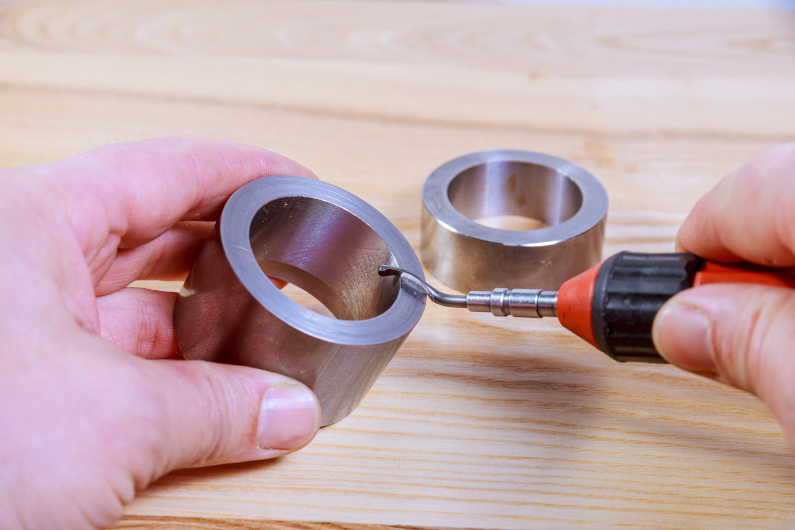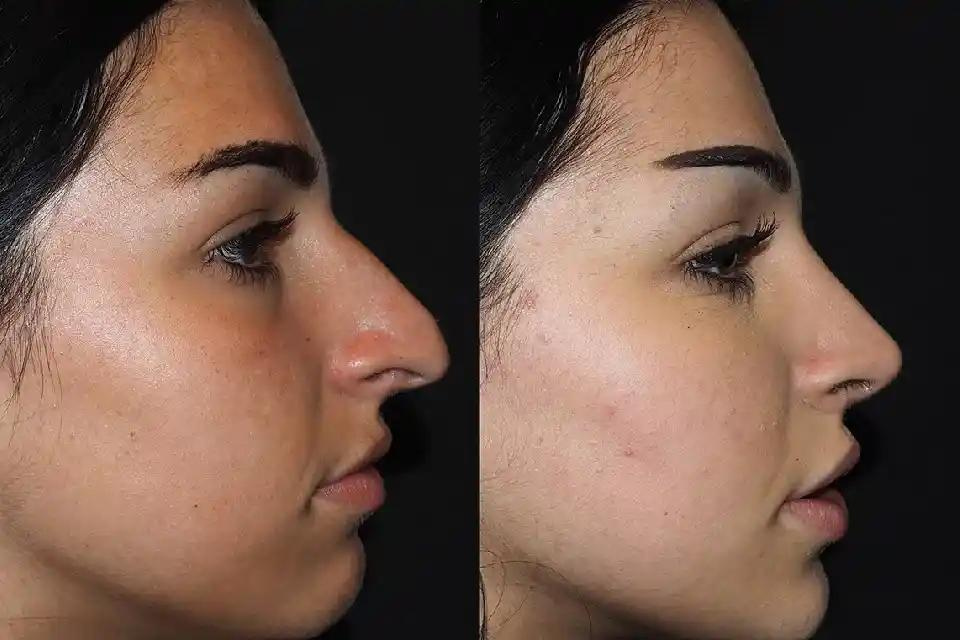In manufacturing and machining processes, the term “deburring” refers to the removal of unwanted material, called “burrs,” from a part’s surface after it has undergone cutting, grinding, or other forms of processing. Burrs are sharp or rough edges that can form on parts as a result of the machining process. Deburring is crucial not only for enhancing the aesthetic appeal of the part but also for ensuring its functionality, safety, and long-term durability. This article will explore what Deburring is, the different types of deburring processes, the tools used, and the benefits it provides to the overall manufacturing process.
What is a Burr?
Before diving into the specifics of deburring, it’s important to understand what a burr is. A burr is any undesirable raised edge or small piece of material that remains attached to the surface of a part after it has been machined or otherwise processed. Burrs can form when a material is cut, drilled, stamped, or sheared, as the force involved in these processes can cause the material to distort slightly. The burrs are typically thin, jagged, or sharp, and if left untreated, they can affect the part’s functionality and usability.
There are two main types of burrs:
- Break burrs: These are rough edges formed when a material is broken or cut along its grain, often occurring during processes like shearing.
- Machined burrs: These are produced during mechanical processes such as milling, turning, drilling, and grinding.
Burrs can affect a part in various ways, including creating safety hazards, reducing performance, causing wear and tear on machinery, and impairing the assembly process. Thus, Deburring becomes a critical step in ensuring that the finished part meets the required standards of safety, functionality, and quality.
Why is Deburring Important?
Deburring is an essential step in the manufacturing process for several reasons:
- Safety: Burrs can pose safety risks, as they are sharp and can cause cuts, scratches, or other injuries to workers who handle the parts.
- Improved Functionality: Burrs can interfere with the proper functioning of a part, especially if it needs to fit into another component. Excess material can lead to misalignment, poor fitting, or malfunctioning of the assembled product.
- Aesthetic Appeal: Burrs give a rough, unfinished appearance to the part. Removing them creates a smooth, professional finish, which is especially important for products that will be visible or come into direct contact with users.
- Preventing Wear and Tear: Leftover burrs can cause friction when parts move against each other, which leads to excessive wear, heat buildup, and ultimately, premature failure of the part.
- Reducing Maintenance Costs: By preventing burr-related problems, deburring helps reduce maintenance and repair costs that could arise from issues like part misalignment or breakage.
Deburring Methods
There are several methods used to remove burrs from parts, depending on factors such as the material being used, the type of burrs, and the desired finish. These methods can be broadly classified into manual, mechanical, and chemical techniques.
1. Manual Deburring
Manual deburring is often the simplest and most cost-effective method, but it can be labor-intensive and time-consuming. This method involves the use of hand tools, such as files, scrapers, sandpaper, or abrasive wheels, to manually remove burrs from the surface of a part. It is typically used for smaller batches or for parts with complex shapes that require a high level of precision.
Manual Deburring offers the advantage of being precise and allowing for fine control over the process. However, it is not scalable for larger production volumes and can introduce human error. Moreover, it is difficult to achieve consistent results with manual deburring, especially for parts that require a high degree of uniformity.
2. Mechanical Deburring
Mechanical deburring involves using machines and tools to automate the burr removal process. Some common mechanical deburring methods include:
-
Abrasive Tumbling: Parts are placed in a rotating drum along with abrasive media (e.g., stones, ceramic beads, or plastic pellets). As the drum rotates, the parts rub against the abrasive media, which removes the burrs. This method is ideal for small and medium-sized batches of parts.
-
Grinding: Grinding wheels or abrasive belts are used to smooth the surface of a part and remove burrs. This process is common for metals like steel and aluminum and is highly effective in removing larger or tougher burrs.
-
Shot Blasting: In shot blasting, parts are subjected to a high-pressure stream of small steel balls (shot), which impact the surface of the part and remove burrs. This technique is particularly useful for cleaning parts with complex geometries.
-
Centrifugal Barrel Finishing: This process involves rotating the parts in a barrel with abrasive media under centrifugal force. This method is highly effective for deburring and polishing parts and is used in high-volume production.
Mechanical deburring is more efficient than manual methods and is ideal for larger production runs. It provides more consistency and uniformity in results and is capable of removing burrs from a wide variety of materials. However, it often requires significant investment in equipment and can be costly for smaller manufacturers.
3. Electrochemical Deburring
Electrochemical deburring (ECD) is a non-abrasive technique that uses electrical currents to remove burrs. In this process, the part is immersed in a conductive electrolyte solution, and an electrical current is applied. This results in a controlled dissolution of the burrs, leaving a smooth surface behind. Electrochemical deburring is especially useful for parts with intricate geometries and hard-to-reach areas.
This method is highly precise and can provide a uniform finish without damaging the underlying material. However, it requires specialized equipment and expertise, making it more expensive than mechanical methods. Additionally, it is typically limited to certain materials, such as metals.
4. Laser Deburring
Laser deburring uses high-powered lasers to remove burrs by focusing the laser beam on the burrs, causing them to evaporate. This method is highly effective for materials like stainless steel and titanium and can be used for delicate and complex parts where traditional methods might be impractical.
Laser deburring is precise and fast, and it can be automated for high-volume production. However, it requires expensive equipment and is generally used for high-end applications or in industries where precision is critical.
5. Vibratory Finishing
Vibratory finishing is another mass finishing technique that uses vibration to remove burrs. The parts are placed in a vibratory tumbler along with abrasive media. The vibration causes both the parts and the media to move, which helps remove burrs while also polishing the surface. This method is particularly suitable for parts that need to be deburred and polished simultaneously.
Vibratory finishing is efficient for high-volume production, but it works best for parts that are small and medium-sized. Larger parts may require more time and attention.
Tools Used for Deburring
The tools used for deburring vary depending on the method being employed. Some common tools include:
- Files: Manual tools used for scraping or smoothing burrs from a part.
- Deburring Blades: Single-edge or double-edge blades designed specifically to remove burrs from metal parts.
- Wire Brushes: Used for cleaning parts and removing small burrs.
- Abrasive Wheels: Mounted on grinders or polishing machines to remove burrs and smooth surfaces.
- Rotary Tools: Handheld tools with rotating abrasive bits used for precise deburring.
- Tumbling Media: Abrasive materials used in barrel or vibratory finishing machines.
Conclusion
Deburring is a vital process in manufacturing that ensures parts are free of rough edges, burrs, and sharp points that could cause safety issues, performance problems, or premature failure. Whether done manually or using automated methods, deburring improves the safety, functionality, and appearance of products. As technology advances, new Deburring methods such as laser and electrochemical deburring are emerging, providing manufacturers with more options for efficient, precise, and high-quality finishes. Understanding the importance of deburring and selecting the appropriate method for each application can have a significant impact on the quality and success of a manufacturing operation.




